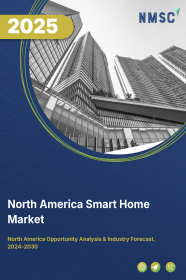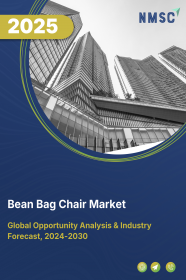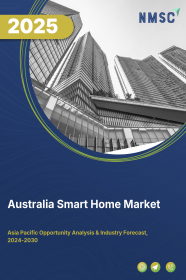
North America Smart Home Market by Product Type (Smart Lighting, Smart Home Security & Surveillance, Smart Entertainment, and Smart Appliances), by Communication Protocol (Wi-Fi, Zigbee, Z-Wave, Bluetooth, and Thread), by Smart Home Hubs (Standalone Hubs and Built-in Hubs), by Voice Assistants Integration (Amazon Alexa, Google Assistant, Apple Siri, and Others) – Opportunity Analysis and Industry Forecast, 2024–2030
Industry: Retail and Consumer | Publish Date: 15-Feb-2025 | No of Pages: 177 | No. of Tables: 126 | No. of Figures: 91 | Format: PDF | Report Code : RC2264
US Tariff Impact on North America Smart Home Market
Trump Tariffs Are Reshaping Global Business
Market Overview
The North America Smart Home Market size was valued at USD 41.31 billion in 2023, and is predicted to reach USD 122.04 billion by 2030, at a CAGR of 16.7% from 2024 to 2030. A smart home, alternatively termed a connected home, denotes a dwelling furnished with sophisticated technology and automation setups facilitating the oversight and management of diverse household gadgets, appliances, and security functionalities via a centralized network. These intelligent gadgets can be remotely controlled and frequently react to verbal instructions or predetermined timetables, augmenting convenience, energy conservation, and safety for residents. Connected homes market commonly integrate components such as intelligent thermostats, lighting arrangements, surveillance cameras, voice-activated assistants, and interconnected appliances intended to elevate the overall residential lifestyle.
Digitalization and Energy Efficiency Initiatives Fuels the Market Growth
The rapid advancement of digitalization, combined with a strong emphasis on energy efficiency initiatives in countries such as the U.S. and Canada, propels the North America smart home market. As consumers increasingly integrate connected home technologies into their lives to streamline operations and exert greater control, the smart home market experiences significant expansion in the region.
The U.S. smart home market is forecasted to steadily expand over the next five years, with user penetration projected to reach 68.64% by 2027, marking a 20.7% surge from 2023. This dual impetus of digitalization and energy consciousness drives Americans to seek innovative solutions for smarter, more eco-friendly homes.
Cybersecurity Concerns and Demand for Enhanced Security Solutions Drives the Market Growth
The escalating demand for home assistant devices in the U.S. and Canada is driven by various factors, notably the mounting apprehension surrounding cybersecurity incidents. A substantial portion of Canadians encountered cybersecurity issues in 2022, with over 70% reporting incidents a 12% increase from 2020. This surge underscores the urgency for bolstered security measures within connected homes to combat cyber threats effectively.
The desire for heightened control and monitoring of connected devices, coupled with a concerted focus on safeguarding personal data and privacy, further propels the adoption of connected home security solutions, underscoring the growing significance of cybersecurity in driving the North America smart home market expansion.
Security and Data Privacy Pose a Hindrance to the Growth of the Market
The growth of the smart home industry encounters a significant obstacle as security concerns loom over these interconnected systems. Smart devices such as thermostats, cameras, and door locks are vulnerable to hacking, posing threats to the privacy and safety of residents. This susceptibility often arises from weak or easily predictable passwords and insufficient Wi-Fi network security measures.
Exploiting these vulnerabilities, hackers gain unauthorized access, potentially manipulating devices or accessing sensitive data. To counteract these risks, connected homeowners must prioritize robust password management, routinely update device firmware, and fortify their home networks, thereby minimizing the likelihood of cyber-attacks and shielding their connected homes from potential breaches.
Integration of Blockchain Technology into Smart Home Devices Presents Lucrative Opportunity for Market Expansion
The introduction of blockchain technology into smart home devices presents a promising avenue to reinforce the security and confidentiality of connected home systems. Renowned for its robust security features and transparent nature, blockchain encrypts and securely stores sensitive connected home data, empowering users to regulate access to their information and mitigating the risk of unauthorized breaches.
By verifying device identities, blockchain ensures that only trusted devices interact within the smart home network, while also automating tasks through tamper-proof smart contracts. Furthermore, blockchain technology decentralizes device control, diminishes vulnerabilities, and streamlines transparent access control and permissions management.
By integrating blockchain into connected homes, security and privacy are elevated, cultivating a more secure and private connected home environment. Consequently, this integration is poised to generate abundant growth prospects for the North America smart home market.
U.S. Holds the Dominant Share in the Market
The swift advancement of digitalization, paired with a robust emphasis on energy efficiency initiatives, propels the smart home market forward in the US. Increasingly, consumers are embracing connected home technologies to streamline convenience and command over their digitally interconnected daily routines.
Concurrently, a focus on energy efficiency and sustainability drives widespread adoption of smart thermostats, lighting, and appliances, empowering homeowners to curtail energy usage and expenses. This dual impetus of digitalization and energy consciousness propels the North America smart home market as Americans seek inventive solutions to imbue their homes with intelligence and eco-friendliness.
Moreover, the expansion of the smart home market in the United States is significantly fueled by the comparatively ample disposable income of consumers in this region. With greater purchasing power, American households exhibit a penchant for investing in high-end home technologies and automation solutions, including connected home products.
According to the US Bureau of Labor Statistics (BLS), disposable income in the U.S. witnessed a notable surge in spending patterns among American households in 2022. The average annual expenditures for all consumers totaled USD 72,967, reflecting a substantial 9.0% increase from the previous year.
As disposable income levels continue to ascend, the North America smart home market demand is poised to escalate, solidifying their status as indispensable components of contemporary American households.
Canada to Witness a Substantial Growth in the Market
The burgeoning demand for smart home products in Canada stems from various factors, notably the escalating concern surrounding cybersecurity incidents. In 2022, over 70% of Canadians encountered a cybersecurity incident, marking a significant increase from 58% in 2020, representing a 12% year-on-year uptick. This heightened awareness prompts Canadians to turn to connected home solutions to fortify their security measures and shield against cyber threats.
The inclination towards bolstered control and surveillance of interconnected devices, alongside a heightened emphasis on safeguarding personal data and privacy, drives the uptake of connected home technologies as Canadians seek digital defenses in an increasingly interconnected landscape.
Furthermore, Canada's growing emphasis on energy preservation and sustainability further propels the adoption of smart thermostats, lighting, and appliances. Consumers are increasingly committed to reducing energy consumption and minimizing their ecological impact.
Notably, between 2020 and 2022, the utilization of smart home appliances experienced significant growth in Canada. Over this period, the adoption of Internet-connected connected home devices steadily increased from 42% to 47%, indicating Canadians' escalating preference for automation and convenience.
Competitive Landscape
Several market players operating in the North America smart home industry include LG Electronics, ASSA ABLOY, Amazon Inc., Samsung Electronics, Sony, Emerson Electronic Co., Johnson Controls International PLC, Centrica Connected Home Limited, Resideo Technologies Inc., Apple Inc., and others.
North America Smart Home Market Key Segments
By Product Type
-
Smart Lighting
-
Smart Bulbs
-
Smart Light Strips
-
Smart Switches
-
-
Smart Home Security and Surveillance
-
Smart Cameras
-
Video Doorbells
-
Smart Locks
-
Security System
-
-
Smart Entertainment
-
Smart TVs
-
Smart Speakers
-
Streaming Devices
-
-
Smart Appliances
-
Smart Refrigerators
-
Smart Ovens
-
Smart Washing Machines
-
Smart Dishwashers
-
Smart Home HVAC Management
-
Other Smart Appliances
-
By Communication Protocol
-
Wi-Fi
-
Zigbee
-
Z-wave
-
Bluetooth
-
Thread
By Smart Home Hubs
-
Standalone Hubs
-
Built-in Hubs
By Voice Assistants Integration
-
Amazon Alexa
-
Google Assistant
-
Apple Siri
-
Others
By Smart Home Compatibility with Smartphones
-
iOS
-
Android
By Installation
-
DIY Installation
-
Professional Installation
By Sales Channel
-
Online Retailers
-
Retailers
By Country
-
The U.S.
-
Canada
-
Mexico
REPORT SCOPE AND SEGMENTATION:
|
Parameters |
Details |
|
Market Size in 2023 |
USD 41.31 Billion |
|
Revenue Forecast in 2030 |
USD 122.04 Billion |
|
Growth Rate |
CAGR of 16.7% from 2024 to 2030 |
|
Analysis Period |
2023–2030 |
|
Base Year Considered |
2023 |
|
Forecast Period |
2024–2030 |
|
Market Size Estimation |
Billion (USD) |
|
Growth Factors |
|
|
Countries Covered |
3 |
|
Companies Profiled |
10 |
|
Market Share |
Available for 10 companies |
|
Customization Scope |
Free customization (equivalent up to 80 working hours of analysts) after purchase. Addition or alteration to country, regional, and segment scope. |
|
Pricing and Purchase Options |
Avail customized purchase options to meet your exact research needs. |
KEY PLAYERS
-
LG Electronics
-
ASSA ABLOY
-
Amazon Inc.
-
Samsung Electronics
-
Sony
-
Emerson Electronic Co.
-
Johnson Controls International PLC
-
Centrica Connected Home Limited
-
Resideo Technologies Inc.
-
Apple Inc.

















 Speak to Our Analyst
Speak to Our Analyst




















